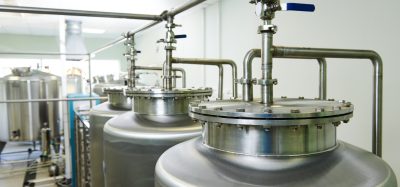Regulatory Insight: Pharma sector – long a target for antitrust enforcers
Posted: 30 June 2016 | Diarmuid Ryan (Squire Patton Boggs), Martin Rees (Squire Patton Boggs) | No comments yet
Many features of the pharmaceutical sector make it prone to antitrust scrutiny. Intellectual property rights, in particular patents, and the promise of monopoly rents while patents remain valid, play a crucial role in incentivising new product research and development. On the other hand, the European Commission and the various national competition authorities throughout the EU, including the UK Competition and Markets Authority’s (CMA), have applied the EU competition rules to break down barriers to trade between EU countries (a particular obsession of the Commission, given its overriding single market agenda). The rules are also designed to ensure anticompetitive agreements and concerted practices and abusive strategies are not allowed to unduly prevent or delay generic producers from bringing competitive pressure to bear on originators, and to ensure that the business practices of dominant originators do not cross the line into abusive exploitation of customers or abusive exclusion of rivals…


UK competition regime reform and impact on antitrust enforcement activity
Prior to 1st April 2014, the UK had two main competition authorities1 : the Office of Fair Trading (OFT; responsible for enforcing the prohibitions of anti-competitive agreements/concerted practices and abuse of dominance, as well as for Phase 1 merger control reviews and market studies) and the Competition Commission (responsible for Phase 2 merger control, market investigations and certain regulatory decisions). On 1st April 2014, these two authorities were replaced by the CMA. This change was in part driven by the perceived need to increase the speed and robustness of the UK competition enforcement regime: the UK Government’s June 2013 policy paper2 cited “Difficulties in successfully prosecuting infringements of the Competition Act 1998 (known as antitrust cases) at reasonable cost and in reasonable time”. There was growing concern that the volume of enforcement cases taken on by the OFT was too low, that the OFT was taking too long to process those cases it did pursue and that too many infringement decisions were not surviving the rigours of an appeal to the Competition Appeal Tribunal (CAT).
To date, approaching the two-year anniversary of the CMA assuming its role, it is not obvious that the CMA has attained this objective or that it will be attained in the short term. The 5 February 2016 Report of the National Audit Office on “The UK Competition Regime”3 concluded that “The CMA and the regulators are acting to improve the detection of anti-competitive behaviour and to build a pipeline of cases, but the system has so far failed to produce a substantial flow of enforcement decisions. Awareness of competition law and the competition authorities is low, and there is limited evidence on the full impacts of competition work”4.
However, and notwithstanding the overall low level of CMA enforcement activity, the one sector where the CMA has been markedly active, in particular in the past year, is the pharma sector, consistent with the parallel continuing focus of the European Commission on this sector.
Milestone CMA pharma cases in 2015 – 2016
A number of developments in the CMA’s antitrust enforcement actions in the past year show a distinct focus on the pharmaceutical sector, with a number of high profile cases raising competition law issues of central importance.
Paroxetine pay-for-delay settlements
Most prominent was the CMA’s 12th February 2016 decision5 to fine GSK £37.6 million for infringing the prohibitions of anticompetitive agreements and abuse of dominance by entering into ‘pay-for-delay’ agreements with three generic pharmaceutical firms, to settle patent disputes regarding paroxetine, an anti-depressant medicine. The CMA also imposed fines of £5.8 million and £1.5 million, respectively, on GUK and Actavis for breach of the prohibition of anticompetitive agreements with respect to their respective settlements with GSK6.
GSK marketed paroxetine as Seroxat and this was one of its blockbuster brands, with UK sales exceeding £90 million in 2001. In 2001, GSK brought patent infringement proceedings against the generics firms, in reliance on GSK’s unexpired (until 2003) patents in relation to paroxetine, against their generic paroxetine products about to be launched in the UK. These patent infringement proceedings settled pre-trial. The CMA found that under these settlements, GSK agreed to make payments and other value transfers totalling over £50 million. The “other value transfers” took the form of GSK appointing the generics firms as Seroxat distributors and permitting the supply by them of limited volumes of product to the market instead of GSK, thereby achieving transfers by GSK to the generics firms of profit margins but “with no meaningful increase in the level of competition facing GSK”. The CMA found that because “these payments and other value transfers were aimed at delaying the potential entry of generic competitors into the UK market for paroxetine”, they infringed the prohibition of anticompetitive agreements (as regards GSK’s settlement agreements with GUK and Actavis which lasted during 2002 – 2004) and also constituted an abuse by GSK of its dominant position on that market. The CMA’s announcement also notes that when independent generic entry eventually took place in 2003, average paroxetine prices dropped by over 70% in two years.
Immediately following the CMA’s announcement, GSK stated that it was considering an appeal and that “GSK and the generics companies entered into these agreements at the time in order to settle costly, complex and uncertain patent disputes. The agreements allowed the generics companies to enter the market early with a paroxetine product and ultimately enabled a saving of over £15m to the NHS”7. At the time of writing, it has been reported that GSK lodged its appeal on 13 April 2016.
The CMA’s reasoning and the counter-arguments likely to be advanced on appeal by GSK (and GUK/Activis if either appeal) mirror the EU-level ‘pay-for-delay’ appeals pending before the EU’s General Court, arising in particular from the Commission’s:
- June 2013 infringement decision8 fining Lundbeck €93.8 million and fining four generics firms €52.2 million in aggregate, for entering into pay-for-delay settlements to patent disputes relating to citalopram, an antidepressant medicine; and
- July 2014 infringement decision9 fining Servier €331 million and fining five generics firms €96.7 million in aggregate, for entering into pay-for-delay settlements to patent disputes relating to perindopril, a blood pressure medicine.
Among the grounds of appeal Lundbeck (for instance) is relying on is that the Commission “wrongly assessed the relevance under Article 101(1) Treaty on the Functioning of the European Union (the Lisbon Treaty) of value transfers in the context of patent settlement agreements”10. The hearings before the General Court in the Lundbeck case have taken place. Lundbeck is reported11 to have argued that settlements that include payments by the originator to the generic producers are inducements to legal agreements made within the scope of valid patents and merely reflective of the fact that originator firms pursuing patent disputes all the way to the end would be unlikely to obtain full restitution of the harm caused by the generics.
The approach of the General Court and (in the event of further appeal) the European Court of Justice (ECJ), in the Lundbeck and Servier cases, may well be decisive also as regards the fate of the CMA’s GSK decision before the CAT and superior courts in the UK. The competition authorities need to be careful not to make it impossible for originators to reach an agreed resolution of challenges to their patents. That outcome would be contrary to the public interest in the efficient administration of justice.
Phenytoin sodium capsules excessive and unfair pricing
On 6 August 2015, the CMA announced that it had sent a statement of objections to Pfizer and Flynn Pharma, indicating an intention to find that both had abused their dominant positions for the wholesale and retail supply in the UK of phenytoin sodium capsules, an anti-epilepsy drug, by engaging in excessive and unfair pricing.
Before September 2012, Pfizer had manufactured phenytoin sodium capsules and itself sold them to UK wholesalers and pharmacies under the Epanutin® brand. Once its patents expired, Pfizer sold the distribution rights to Flynn Pharma in September 2012 and continued to manufacture the drug, which it sold to Flynn wholesale. Flynn, in turn, de-branded the drug and started selling its version in September 2012. The CMA’s announcement states that Pfizer’s wholesale prices to Flynn were set at levels “significantly higher than those at which it had previously sold Epanutin® in the UK – between 8 and 17 times Pfizer’s historic prices”. Further, according to the CMA’s announcement, Flynn then sold the drug on to customers “at prices which were between 25 and 27 times higher than those historically charged by Pfizer”. The NHS’ spend on phenytoin sodium capsules increased from £2.3 million in 2012 to £50 million in 2013 and over £40 million in 2014.
The prohibition on abusing a dominant position has been in place since the founding of the EU’s predecessor, the European Economic Community in 1958. Its founding treaty specifically listed “imposing unfair purchase or selling prices” as an abuse. Further, the scope of this heading of abuse has been clear(ish) since the ECJ’s United Brands12 judgment in 1978 when the ECJ set out that abusive behaviour by a business which is in “a position of economic strength […] which enables it to prevent effective competition in being maintained on the relevant market by giving it the power to behave to an appreciable extent independently of its competitors, customers and ultimately of its consumers” is caught by these provisions. Nevertheless, traditionally the Commission and national competition authorities in the EU have been reluctant to police high pricing as such absent other abusive conduct.
This reluctance is reflective of potential difficulties in calculating what amounts to an unreasonably high price and in establishing accurately what is the relevant competitive benchmark price, as well as concerns that price control may disincentivise market entry13, and investment altogether. It is also reflective of the subjectivity of the legal test itself. In United Brands, the ECJ said that unfair pricing arose when a dominant supplier “has made use of the opportunities arising out of its dominant position…to reap trading benefits…” and that a price would be unfair if it bore “no reasonable relation to the economic value of the product supplied” by reference to (i) production costs and (ii) a comparison to competing products’ prices. In Attheraces Ltd v. British Horse Racing Board14, the English Court of Appeal, in overturning the High Court’s judgment, emphasised that the central concept of unfair pricing is “economic value”, i.e., whether the price charged, although above cost, was nevertheless reflective of the economic value to the customer (in that case, of pre-race data).
In this case, the increased pricing objected to by the CMA took place only once Pfizer’s patents had expired. Nevertheless, given that R&D spending and investment decisions by pharmaceutical firms are, for the most part, based on the prospect of sales from successful drugs and these successes are used to cover wasted investment from unsuccessful R&D efforts, the potential impact on future investment decisions of the antitrust authorities in the EU positioning themselves as pure price regulators needs to be carefully considered.
It is also noteworthy that, on 12 April 2016, the CMA took the quite unusual decision to impose a fine (of £10,000) on Pfizer for failing, without reasonable excuse, to provide within the specified deadline, information requested by the CMA related to certain statements made by Pfizer at the oral hearing held on 21 January 2016. The CMA has published its detailed decision, which fails to provide any good reason for the imposition of this fine. However, if fines are to be imposed in such situations, companies under investigation will think twice before asking for an oral hearing and will have to be very cautious in responding to requests for information and complying with deadlines even if that means that the fullest answer cannot be given. It is highly questionable whether the CMA’s aggressive approach will improve the process of investigation.
Abusive loyalty rebates/discounts
On 26 June 2015, the CMA announced15 its decision to close an investigation into loyalty-inducing discounts/rebates offered by an (unnamed) pharmaceutical firm potentially in breach of the abuse of dominance prohibition. The CMA closed its file because the case “no longer fitted with the CMA’s casework priorities”. The CMA’s announcement included a succinct summary of “some of the circumstances in which the provision of rebates or discounts by a dominant company may raise concerns”, closely following the approach set out in the European Commission’s 2009 guidelines on its enforcement priorities in applying Article 102 – in particular indicating that the CMA is only likely to take enforcement action against rebate schemes under the abuse of dominance prohibition where the resulting net pricing makes it impossible for as-efficient competitors to compete profitably. Although the CMA ultimately decided to close its file in this case, the fact that it launched the investigation and persevered with it for a year still sends a message to firms in the sector that they cannot assume the CMA will not investigate such cases in the future and proceed to infringement decision where there is a clearer case for foreclosure and adverse consumer welfare impact. The CMA’s statement included: “The decision to close this investigation should not be taken to imply that the CMA would not prioritise investigations into suspected loyalty-inducing discount schemes in the future”.
The CMA’s continuing scrutiny of such discounts was confirmed on 1st December 2015, when the CMA announced16 that it had opened a new probe into suspected abusive rebates in the pharmaceutical sector (without identifying the company/ies under investigation).
Conclusion
Overall, 2015 – 2016 has been marked by active enforcement by the CMA in the pharma sector. In particular, the Paroxetine and the Phenytoin sodium capsules raise highly complex legal and factual issues, sure to continue to generate debate for some time. Given the pressure the CMA continues to come under to increase its antitrust enforcement productivity, there is no reason to think that the level of antitrust scrutiny the pharmaceutical sector faces from the CMA will decrease in the future and every reason to expect that it may increase, in particular given the Government’s attempts to reduce NHS costs. Indeed, on 8th March 2016 and on 13th April 2016, the CMA announced on its website17 that it had opened a new abuse of dominance probe (March) and a new probe into a suspected anticompetitive agreement (April), in the pharmaceutical sector (without, however, indicating which company is, or companies are, under investigation or the specific nature of the suspected infringements).
Footnotes and References
- In addition to a handful of sector-specific regulators with concurrent enforcement powers as regards their particular sectors, all outside the pharmaceutical sector
- Available at: https://www.gov.uk/government/publications/enterprise-and-regulatory-reform-act-2013-a-guide
- Available at: https://www.nao.org.uk/report/the-uk-competition-regime/
- At point 21 of the NAO Report’s Summary
- See https://www.gov.uk/government/news/cma-fines-pharma-companies-45-million. The redacted version of the CMA’s infringement decision has not yet been published.
- No fine was imposed on IVAX on the basis that its agreement with GSK was covered by a specific exclusion for certain “vertical” agreements from the Competition Act 1998 prohibition of anticompetitive agreements
- See http://www.theguardian.com/business/2016/feb/12/glaxosmithkline-fined-anti-competitive-behaviour-seroxat
- See http://europa.eu/rapid/press-release_IP-13-563_en.htm?locale=en . The public version of the Commission’s infringement decision is available to download at: http://ec.europa.eu/competition/elojade/isef/index.cfm?fuseaction=dsp_result
- See http://europa.eu/rapid/press-release_IP-14-799_en.htm . A provisional public version of the Commission’s infringement decision was published in July 2015 and is available to download at: http://ec.europa.eu/competition/elojade/isef/index.cfm?fuseaction=dsp_result
- OJ [2013] C 325/47, available at: http://curia.europa.eu/juris/document/document.jsf?text=&docid=144427&pageIndex=0&doclang=EN&mode=lst&dir=&occ=first&part=1&cid=209379
- See 12 November 2015 Mlex article “Lundbeck urges EU judges to overturn ‘pay-for-delay’ decision”
- (Case 27/76) United Brands –v- Commission [1978] ECR 207 available at: http://eur-lex.europa.eu/LexUriServ/LexUriServ.do?uri=CELEX:61976J0027:EN:HTML
- Ibid at paragraph 65
- Thus the OFT’s 11 May 2005 decision to close its investigation into suspected excessive pricing by SSL was on the grounds that “With evidence of emerging competition, any potential remedies such as a price cap could stifle such entry and hinder rather than help the competitive process”.
- [2007] EWCA Civ 38 available at: http://www.bailii.org/cgi-bin/format.cgi?doc=/ew/cases/EWCA/Civ/2007/38.html .
- Available at: https://www.gov.uk/cma-cases/investigation-into-conduct-in-the-pharmaceutical-sector
- See https://www.gov.uk/cma-cases/pharmaceutical-sector-alleged-discounts-offered-on-a-product
- See https://www.gov.uk/cma-cases/pharmaceutical-sector-anti-competitive-practices and https://www.gov.uk/cma-cases/pharmaceutical-sector-anti-competitive-agreements
Biography
Diarmuid Ryan and Martin Rees are partners in the Competition & Antitrust Department at Squire Patton Boggs in London. Diarmuid and Martin specialise in all aspects of EU and UK competition and state aid law, including advising on: global competition authority investigations into cartels, collusion and abuse of dominance – including in particular investigations by the UK competition authorities and the European Commission; merger control aspects of M&A transactions; and advising on antitrust disputes either in arbitration or before the English courts (High Court and Competition Appeal Tribunal) and/or the EU General Court and ECJ.









